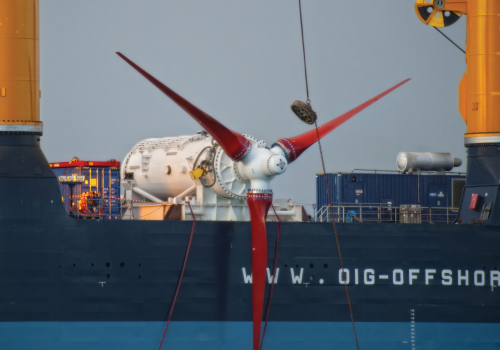
| Watch a video of the Hammerfest Strøm tidal turbine technology here. |
The 1 MW horizontal axis turbine is installed at the European Marine Energy Centre (EMEC) in Scotland, on the seabed, where the rotor blades are driven by tidal currents. A 280° blade pitching system allows optimum rotor blade adjustment, to the direction and speed of the tidal current.
The ANDRITZ HYDRO Hammerfest turbine was installed in December 2011 and has since been undergoing a range of tests in the fast flowing tidal waters around Orkney. It is providing electricity for homes and businesses on the island of Eday, one of Orkney’s northern isles. The 1MW machine can power the annual electricity needs of 500 homes.
Composite tidal blades - new challenges
The engineering and manufacture of this tidal turbine's rotor blades represents Gurit's first pre-commercial scale ocean energy project. The company notes that, despite its experience with ocean energy blades at a smaller scale, and with wind turbine blades at a much larger scale, the project provided significant challenges in the areas of structural engineering and composite processing.
These included developing the ability to laminate and cure an in-part solid carbon spar utilising Gurit's SparPreg material, and optimising in-house engineering programmes to better analyse the unique structural features of a tidal blade.
| Our previous experience with designing ocean energy, wind energy and other marine structures was vital in understanding and engineering these complex structures. We combined our understanding of wind turbine blades, our broad material portfolio, with the new challenges posed by the tidal marine environment, to develop blades which perform hydro dynamically, withstand the predicted loadings and are economical to manufacture. |
| Luke McEwen, Senior Engineer, Gurit |
Gurit reports that material selection became a key part of the design process to ensure that the required dry and saturated properties were available at an industrial price point. The company says that the resulting internal test programme has furthered its understanding of the seawater-saturated performance of epoxy composite materials.
With the blades now in operation, Gurit will continue to work with ANDRITZ HYDRO Hammerfest to verify the design process against real-time data that is being recorded by the blade's instrumentation.




